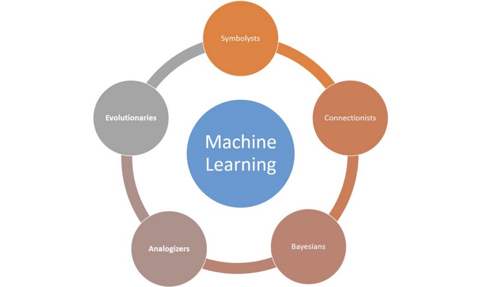In fact, computer science researcher Pedro Domingos, in his book The Master Algorithm, identifies no less than five major schools of thoughts in machine learning, or as he calls them, ‘The Five Tribes of Machine Learning’. They are:

- The Symbolists. They focus on the premise of inverse deduction: they don’t start with a premise to work towards conclusions, but rather use a set of premises and conclusions and work backward to fill in the gaps.
- The Connectionists. They mostly try to digitally re-engineer the brain and all of its connections in a neural network. The most famous example of the connectionist approach is what is commonly known as ‘Deep Learning’. Their techniques have proved very efficient in e.g. image recognition and machine translation.
- The Evolutionaries. Their focus lies on applying the idea of genomes and DNA in the evolutionary process to data processing: their algorithms will constantly evolve and adapt to unknown conditions and processes.
- The Bayesians: Bayesian models will take a hypothesis and apply a type of “a priori” thinking, believing that there will be some outcomes that are more likely. They then update their hypothesis as they see more data.
- The Analogizers: This machine learning discipline focuses on techniques to match bits of data to each other. Probably the most famous example of this type of machine learning, is the Amazon or Netflix recommendations: “If you have watched/bought this, you will; probably like…”
Five different tribes, five different schools of thought, is this a danger for the future of machine learning? Fortunately not: even though their approaches may differ, in practice their algorithms are often combined into one machine learning platform to achieve the best possible result. The power of the different tribes leading to an even better final result? Sounds like the best of all worlds!